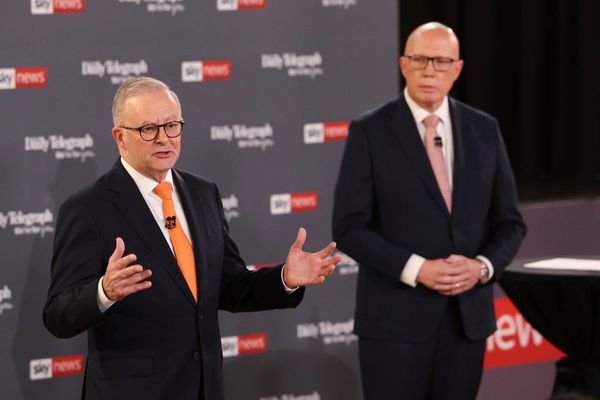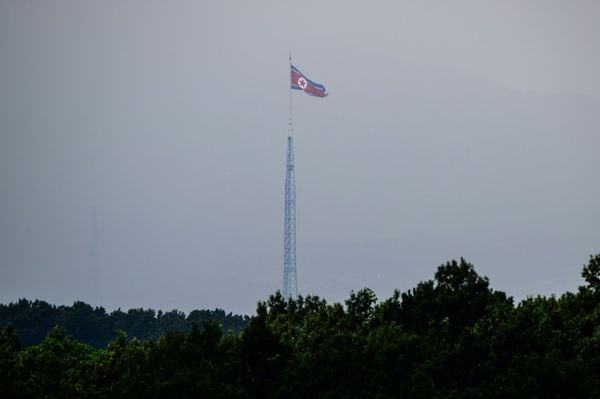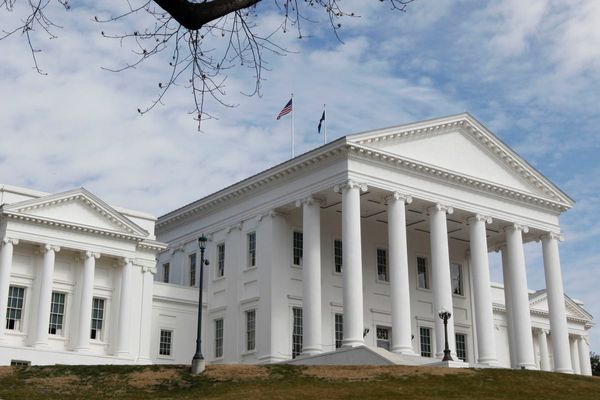
With the Pope issuing an apology to the Indigenous peoples of Canada earlier this month, reconciliation has been top of mind for many Canadians. For white Canadian Vanessa Aegirsdottir and her Indigenous husband, George Bahm, it’s an issue they tackle everyday through their jewelry business—Wild Yukon Furs.

“We created the Wild Yukon furs brand knowing that we wanted to serve the community,” co-founder Vanessa Aegirsdottir tells Forbes. After nearly thirty years as a textile artist, Aegirsdottir’s idea to start Wild Yukon Furs was born one night when—while attending the Great Northern Arts Festival in Nunavut—she had the idea to make jewelry out of hair on leather. She realized she could buy fur from her then-boyfriend, now-husband, George Bahm, who was a descendant of trappers.
“I knew having an Indigenous partner with a strong connection to the land, I could do something more meaningful than manufacturing trinkets,” says Aegirsdottir. “I’m an ethics-driven artist, I’m very connected to my process and less so to the product. So for me, to be able to communicate the source of products to the end user was an exciting challenge to me.”

It’s this deep understanding of the source of Wild Yukon Furs—the teachings passed on from Bahm’s elders—that inspires her designs. “I feel this enormity, an importance and reverence for honoring these teachings in an appropriate way,” says Aegirsdottir. “At first glance, it looks like a jewelry store, but it’s a story store,” adds Bahm. “When people purchase the product they’re buying our beautiful story, not just something to give.”
The storytelling happens not just verbally, between the couple and their customers, but also through the educational inserts that come with each piece: a trappers statement, an artist statement and a statement on how their brand functions. “We want people to remember where the fur comes from, the story of the animal, and its place in the culture,” says Bahm.

But more than the storytelling, an even more crucial priority for the brand is supporting Indigenous trappers. “What really sets our brands apart is that we use Indigenous-sourced fur,” says Aegirsdottir, explaining how they only work with trappers who are Indigenous or supporting an Indigenous community.
“Indigenous trappers have a relationship to the land that goes deeper than what the government tells them they have to do, they’re held to a standard that is determined by their cultural teachings,” Aegirsdottir tells Forbes. Subsequently, Aegirsdottir says choosing Indigenous trappers adds “a layer of respect and humility to the process. It’s a shift in behavior in terms of how the fur is handled, right from before any traps are put out.”

That shift in behavior? Operating from a place of deep respect for the land. Bahm will conduct a ceremony at the beginning of each trapping season, making an offering to the land. He speaks to the land and animals in his native language, expressing appreciation for what the environment has to offer them. “One of the strong beliefs we hold that comes from Indigenous teachings is that these animals give themselves,” says Aegirsdottir. “The rivers are a ‘who’ not a ‘what’, these animals have chosen to give themselves, so it’s a gift,” adds Bahm.

It’s a controversial opinion—that the animals have offered themselves to the trapper—one that has drawn criticism from animal rights activists. To the critics, Aegirsdottir asks, “Have you ever considered there is no good death in nature? The alternative is predation or starvation.” The co-founder says there’s an amount of population management that needs to occur regardless, “in the interest of not wasting what needs to be managed, this is another way that we can honor these animals.”

One way they respect the animals is by trapping in the most humane way possible. “In Canada, we’re held to such a high standard of trapping for humanity,” says Aegirsdottir, explaining that they use either quick kill traps that result in an instant death or neck snares which function by putting the animal to sleep.
“I try to remember there’s a spirit in everything, that these are gifts from the earth and we have to regard them this way,” says Bahm. Aegirsdottir adds, “We handle ourselves on the land with respect, humility and gentleness, understanding that, unlike what the Bible teaches, we do not rule over the land and creatures, we have the privilege of being there and we are in relationship with the trees, the animals, the air, the sun. It’s understanding our place, that we’re not at the top of the heap.”

It's this deep respect for, and commitment to the preservation of, the Indigenous practice of trapping, that makes Wild Yukon Furs an example of reconciliation. “Reconciliation is easy. There’s lots of little things we can do,” the artist tells Forbes. “It doesn’t have to be these large expensive programs that the government initiates. Yes that has to happen, but we can also do these small acts.”

Small acts, for Wild Yukon Furs, look like adding the Indigenous name for the land from which each piece was sourced on every label and asking permission from Indigenous communities to trap on their land. “That, to me, is an act of reconciliation,” says Aegirsdottir. “Demonstrating my understanding of whose traditional territory we’re on and making those acknowledges, not in a tokenizing fashion, but in a meaningful way.” Their new store in Skagway, Alaska, for example, will offer materials with text reminders that they are on traditional territory.
It can be easy, in busy urban environments, to forget the Indigenous history of the land on which we stand. “There’s capitalism and the rat race, it’s harder to apply any iteration of an Indigenous worldview,” says Aegirsdottir. It’s why something subtle like a piece of jewelry can be so effective in acting as a gentle reminder. “The first question is, ‘is that real fur?’” says Aegirsdottir, explaining how her jewelry can act as a conversation-starter around the Indigenous practice of trapping. “If we can create these gentle reminders, it might inspire people to look deeper. We want to inspire people to be curious.”

While small gestures of reconciliation to Bahm and Aegirsdottir looks like encouraging conversation and the acknowledgement of traditional territory, the more important gesture, to them, is providing a sustainable income for Indigenous trappers. “When I’m buying furs I’m not just picking their furs because it’ll give me a unique market position,” says Aegirsdottir. “I do it so that I can protect those Indigenous-held trap lines and make them not just sustainable, but profitable. Profit is okay. These trappers need to be protected.”
The co-founder explains that historically, Indigenous trapping has not been a profitable business because the auction house where the trappers sell their furs doesn’t give them control over how their goods are brought to market; they’re vulnerable to fluctuating demand and low prices. Instead, Wild Yukon Furs can communicate with the trappers to strategically produce the kind of fur they’ll need, guaranteeing the trappers financial security in advance.

“I’m trying to create something that’s more equitable. Everyone has a right to have agency over their life and their livelihood, and that’s not what the auction house provides. There’s a lot of financial risk,” explains Aegirsdottir. “One of my favorite teachings from George is the concept of redistribution of wealth. I don’t want to be successful by myself and I’m not getting there by myself. If I can buy furs exclusively from Indigenous trappers and pay them as much money as possible, there’s lots of room to share that with my suppliers.”

This redistribution of wealth is one they hope can extend to future generations, by preserving a financially viable business for Indigenous trappers. “If trappers aren’t getting fair trade for their furs, it’s putting the lifestyle at risk,” says Bahm. “Before contact people were trading fur but the whole lifestyle is at risk because of the anti-fur movement too. This allows me to stay connected to the land, to preserve the culture for the next generation.” Aegirsdottir adds, “I need to protect these relationships so we can all keep doing well together, so we have something to pass on to the next ones.”
Crucial to ensuring the preservation of Indigenous practices is continuing to have the difficult conversations. “One of the things I hear from my husband all the time, is ‘nothing for us without us,’” says Aegirsdottir. “If we’re going to make meaningful change, from a white person’s perspective, I need to listen first. And not just stop talking and wait for my turn to say something, but really listening.”

Due to the controversial nature of fur, Aegirsdottir says her jewelry pieces act as “polarizing material” that can prompt difficult conversations. “When I started this store, I had no idea so much of it was going to be about education,” the jewelry maker tells Forbes. “I feel like I have a responsibility—if I can inspire white people to risk a little of their privilege, what are they going to lose? Growth happens in the hard places. You have to be willing to show up, figuratively naked. That vulnerability is the underpinning of everything we’re doing here. We want to grow something that creates jobs, that protects Indigenous traplines, that serves our whole community.”

Aegirsdottir wants to convince Canadians, who tend to be inclined to avoid the uncomfortable conversations, that reconciliation is easier than they might think. “This is where apathy creeps in with Canadians and reconciliation, they think, ‘I’m just one person, what difference can I make?’” Aegirsdottir tells Forbes. “But that micro-influence has impact. I’ve already seen the benefits from my business, I’ve seen how it’s impacted people positively.”

Something as seemingly insignificant as wearing a necklace with a small piece of fur can inspire curiosity, catalyzing conversations about Indigenous culture—whether that be the Indigenous name of the traditional territory, the act of trapping itself or our relationship to the land and animals. If Wild Yukon Furs can impact even one person, for Bahm, that’s enough, “if our business allows just one Indigenous family to connect to the land in a meaningful way, I see this as a huge success.”
Some interview responses have been edited for length and clarity.







